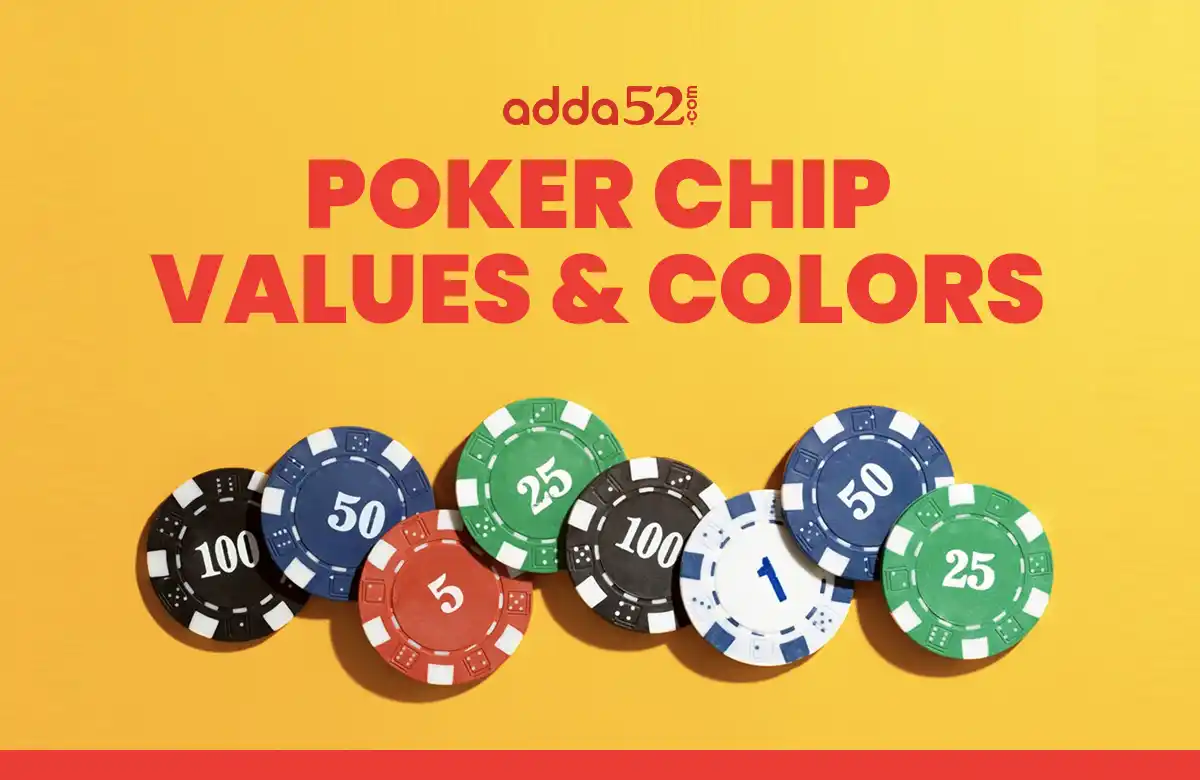
What Are Poker Chips
Poker chips are essential for any game, whether in a casino, home game, or tournament. Understanding poker chip values and denominations ensures smooth gameplay and confident betting. They not only represent the stakes but also add to the experience and atmosphere of the game. Understanding the value of Poker chips and how they are organised can help you feel more confident at the table and ensure a smoother game.
This blog will cover everything you need to know about poker chip values.
History of Poker Chips
Modern casino chips have evolved from counters in 18th-century card games like Ombre and Quadrille. The French Quadrille set in 1752 includes several counters such as jetons, fiches, and mils.
In the 19th century, players used anything valuable as chips, including gold pieces, nuggets, dust, and coins. Poker chips were made from ivory, bone, wood, paper, and clay mixed with shellac. From the 1880s, companies started using composition chips in over 1,000 designs, mainly in white, red, blue, and yellow, though other colours were available.
Poker Chip Denominations
Poker chips are color-coded to represent denominations. While there is no universal standard for chip colours, most poker rooms follow a fairly consistent colour scheme.
Listed below are the Poker chip colour values frequently encountered in gaming rooms (Based on the rate of 1 INR = 0.012 USD):
Poker chip Color Codes
| Chip Color | Value (USD) | Value (INR) | Usage |
|---|---|---|---|
|
White |
$1 |
₹83 |
The lowest value chip is used for small blinds, bets, or ante. |
|
Red |
$5 |
₹417 |
It is used for medium bets, especially in casual games. |
|
Green |
$25 |
₹2,083 |
A popular choice for higher stakes in cash games and tournaments. |
|
Black |
$100 |
₹8,333 |
Used for high-stakes play, often at professional poker tables. |
|
Purple |
$500 |
₹41,667 |
This is commonly seen in higher-limit cash games and Poker tournaments. |
|
Yellow |
$1,000 |
₹83,333 |
Reserved for high-stakes cash games |
|
Orange |
$1,000 or $5,000 |
₹83,333 or ₹416,667 |
Used for high-roller games and large tournaments |
|
Grey |
$5,000 |
₹416,667 |
For Large tournaments and high-stakes games |
|
Pink |
$10,000 |
₹416,667 |
For high-stake VIP games |
|
Blue |
$25,000 |
₹2,083,333 |
Used or ultra high-stake games |
Common Poker Chip Values and ColoursChip Sets for Cash Games
Chip Sets vary based on the stakes, type of game (cash vs. tournament), and the number of players. Here’s how Poker chip value and colours can be adjusted based on different game types:
Low-Stakes Poker Chip Setup
| Poker Chip Colors | Value (USD) | Value (INR) |
|---|---|---|
|
White |
$0 |
₹21 |
|
Red |
$1 |
₹83 |
|
Green |
$5 |
₹417 |
|
Black |
$10 |
₹833 |
This setup makes for a beginner-friendly, casual game with low stakes, encouraging more people to participate.
Example: In a lower stakes game, players might open the betting with a $1 (₹83) raise using a red chip, while another player could call using four white chips (totalling $1).
Medium-Stakes Poker Chip Setup
| Poker Chip Colors | Value (USD) | Value (INR) |
|---|---|---|
|
White |
$1 |
₹83 |
|
Red |
$5 |
₹417 |
|
Green |
$25 |
₹2,083 |
|
Black |
$100 |
₹8333 |
This arrangement offers plenty of chips for smaller bets and blinds while accommodating significant raises and pots. The balanced assortment of lower and higher Poker chip amounts enables players to place bets comfortably without being overwhelmed by excessive choices.
Example: In a medium-stakes game, players can comfortably place blinds, raise, and call using the available denominations. For instance, a player could open the betting with a $5 (₹417) raise using red chips, while another might call using one green chip worth $25 (₹2,083).
High-Stakes Poker Chip Setup
| Poker Chip Colors | Value (USD) | Value (INR) |
|---|---|---|
|
White |
$1 |
₹83 |
|
Red |
$5 |
₹417 |
|
Green |
$25 |
₹2,083 |
|
Black |
$100 |
₹8333 |
|
Purple |
$500 |
₹41667 |
The inclusion of purple chips in Poker allows players to make larger bets, which is essential in higher-stakes games. A larger proportion of black and purple chips also keeps the table organised even as the pot sizes grow.
Example: In a high-stakes game, players often place gigantic bets and raises. For instance, one player might raise $200 (₹16,667) using two black chips. In response, another player could re-raise to $1,000 (₹83,333), utilising a mix of black and purple chips.
Poker Chip Sets for Tournaments
Chip Sets vary based on the stakes, type of game (cash vs. tournament), and the number of players. Here’s how Poker chip value and colours can be adjusted based on different game types:
In tournaments, players start with a set amount of chips, which may not correlate directly with cash. Tournaments also use ‘blinds’ that increase over time, requiring many chips in various values.
| Poker Chip Colors | Value (USD) | Value (INR) |
|---|---|---|
|
White |
$1 |
₹83 |
|
Red |
$5 |
₹417 |
|
Green |
$25 |
₹2,083 |
|
Black |
$100 |
₹8333 |
|
Purple |
$500 |
₹41667 |
Example: For a successful tournament, here’s the chip distribution based on a starting stack of 10,000 chips per player:
- Total Chip Count: For a tournament with 10 players, you will need enough chips to cover all participants. If each player starts with Poker chips worth 10,000, that’s 100,000 chips needed.
- Suggested Chip Distribution: White Chips (40%): 200 chips ($1 each), Red Chips (30%): 150 chips ($5 each), Green Chips (20%): 100 chips ($25 each), and Black Chips (10%): 50 chips ($100 each).
- Setup for 10 Players: White Chips (400): Total Value = $400 (₹33,200), Red Chips (300): Total Value = $1,500 (₹125,100), Green Chips (200): Total Value = $5,000 (₹4,17,000), Black Chips (100): Total Value = $10,000 (₹8,33,000), and Total Value of Chip Set: $16,900 (Approx. ₹14,05,300).
How to Set Up Chip Denominations
Here’s a guide to help you set up the right chip denominations for your game:
1. Determine Buy-In and Chip Stacks
Start by deciding the buy-in amount and the total number of chips each player will start with. Most home games aim for around 50-100 big blinds as a starting stack to give players enough room to play.
2. Choose Chip Denominations
Select denominations that align with your game’s stakes to make the game manageable. Common Poker chips with values include:
- 1 Unit (often used as an ante or small blind)
- 5 Units (frequent for small blinds, bets, and raises)
- 25 Units (used for larger bets and raises)
- 100 Units (helpful for higher-stakes games or deeper stacks)
3. Set the Right Number of Chips per Player
A standard breakdown for a starting stack might look like this:
- 10 chips of 1 Unit
- 4 chips of 5 Units
- 4 chips of 25 Units
- 2 chips of 100 Units
Aim for around 40-60 chips per player, balancing smaller denominations for flexibility and larger ones for quicker counting in bigger pots.
4. Assign Poker chips value by Color
Assign colours to chip denominations for easy recognition. A typical colour scheme could be:
- White for 1 Unit
- Red for 5 Units
- Green for 25 Units
- Black for 100 Units
This helps players quickly identify chip values during play.
5. Plan for Rebuys and Add-Ons
- If you allow rebuys or add-ons, ensure you have enough chips to accommodate additional stacks.
- You should have higher-denomination chips available for late-game rebuys when blinds are higher.
6. Ensure Enough Chips for the Entire Game
- Too few chips can disrupt the game's flow, especially as blinds increase or players accumulate larger stacks.
- For larger games (8-10 players), having a minimum of 500 chips is a good idea. For smaller games (4-6 players), around 300 chips should suffice.
7. Consider Using a Bank for Cash Games
- In cash games, players may want to exchange chips for higher denominations as stacks grow. Designate someone as a ‘banker’ to handle these exchanges.
- Using a bank also helps keep smaller denominations in play for betting and avoids unnecessary over-chipping.
8. Include Chip Colors for Tournaments
- As blinds increase in tournament play, you may need to colour up or replace smaller denominations. Make sure you have extra chips of higher denominations for this purpose.
- Plan the tournament structure with chip-ups at certain levels to simplify chip management.
9. Buy a Quality Chip Set
- Home game chip sets typically come in 300, 500, or 1,000-chip sets. Choose a set based on your typical number of players.
- Consider purchasing clay or composite chips for durability and a more professional feel.
10. Use Chip Trays for Organization
Chip trays or racks help organise chips before and after the game. They also make transporting and counting chips easy when distributing stacks or cashing out.
Frequently Asked Questions
What are the standard poker chip colours and values?
Standard poker chip values and colours include White—$1, red—$5, Green—$25, Black—$100, and Purple—$500.
What colour poker chip is worth the most?
The light blue or grey colour chips are worth $100,000.
Are casino chip colours universal?
The grey, red, green, and black chips are universal.
What are the different types of poker chips?
There are plastic, composite/clay, ceramic, and metal chips.
What are the standard casino chip values and colours?
Poker chips are often colour-coded to denote different values. Common colours include white ($1), red ($5), green ($25), black ($100), and purple ($500). These colours and values may vary depending on the poker room or home game setup but are generally consistent for smoother gameplay.
How many poker chips are needed for a home game?
For a standard home game, having 300 to 500 chips is generally enough for groups of 4 to 10 players. This range permits different chip denominations and provides sufficient chips for rebuys or add-ons as necessary.
What chip denominations are suitable for low-stakes games?
For low-stakes games, chip denominations might include white ($0.25), red ($1), green ($5), and black ($10). This range offers flexibility for small bets while keeping the game casual and approachable.
Conclusion
Poker chips may seem minor, but their impact on gameplay is undeniable. Assigning casino chip value by colour to suit your game’s stakes and player preferences ensures that every bet, raise, and call feels just right. You can create a professional and enjoyable experience for players at any skill level with the right setup. Now that you have understood the significance and value of poker chips, why not invite friends and have a game or two?
